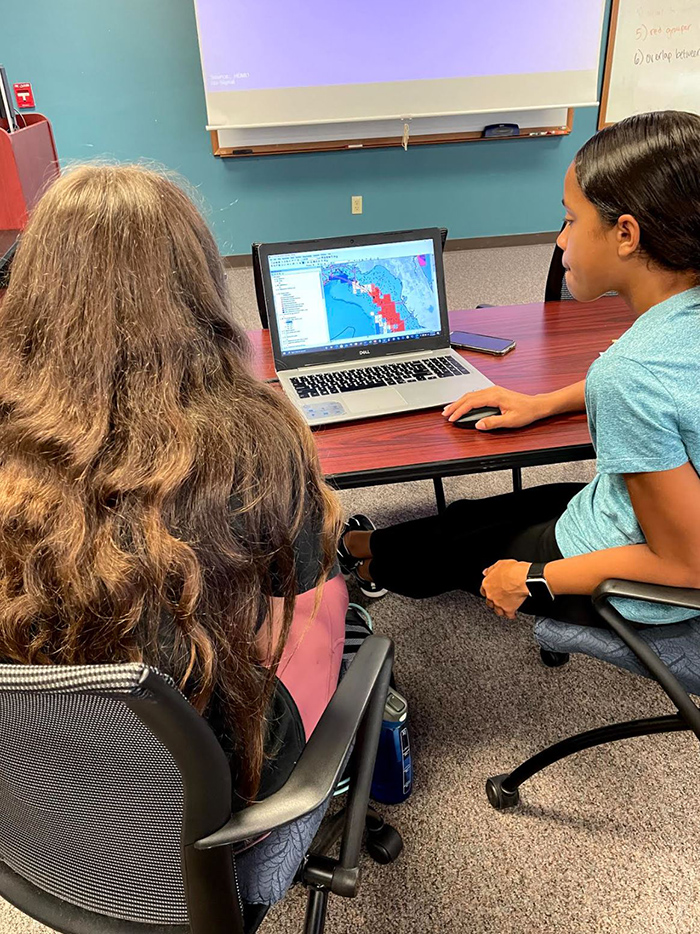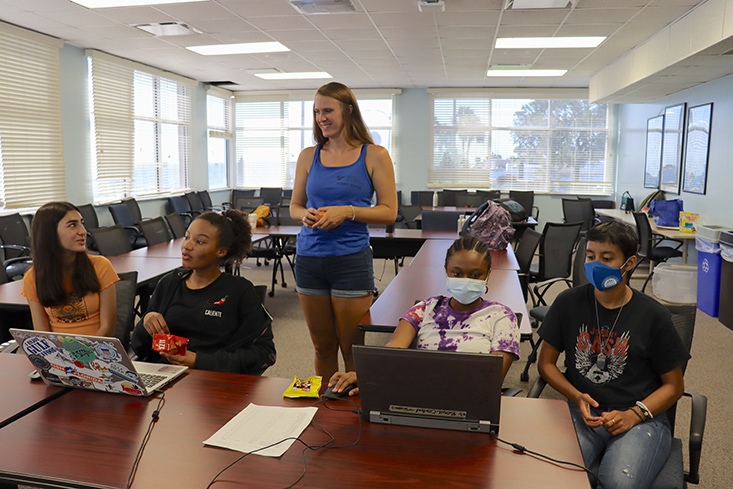Lab rotation: Marine Protection
Lab leaders: Tiff Raetzel & Becky Scott
Peer counselors: Claire Bryant & Shiyenne Muentes
Written by, Tiff Raetzel, Science Mentor
Campers got to learn the importance of protecting marine life and tried their hand at being fisheries managers in the Marine Protection and Fisheries Modeling lab that fellow Science Mentor, Becky Scott and I planned and facilitated. Our lab covered marine protected areas (MPAs), fisheries and the importance of sustainable fishing and ecosystem-based management approaches.

Campers Ava and Jaleyah using ArcGIS to create their own Marine Protected Area.
The MPA portion of the lab covers protected marine species and habitats and the tools that scientists use to study and manage these areas. The main goal was to teach the girls how to use ArcGIS, a geographic information system that can be used to create, manage, analyze, and map data. GIS involves the creation and utilization of various layers, and to get the girls comfortable with this concept, we gave them clear transparency sheets that they use as a team to create a city. Each layer contains things like trees, buildings, and utilities, but when combined it creates a city. The girls then went through a GIS tutorial with Becky before using it to create their own MPA based off a given problem statement. They then exported their maps to use later in their lab presentation.
The second portion of the lab covered fisheries modeling. We began with an exercise utilizing pennies to create a catch curve- or age frequency distribution of catch- to estimate mortality. The girls then got to go fishing for Swedish Fish, and are taught several concepts like recruitment, mortality, immigration, and emigration. They then utilized this data in Excel to create a Schaefer Surplus Production Model. The girls learned how to create plots in Excel that they used for their final presentation to their families.
